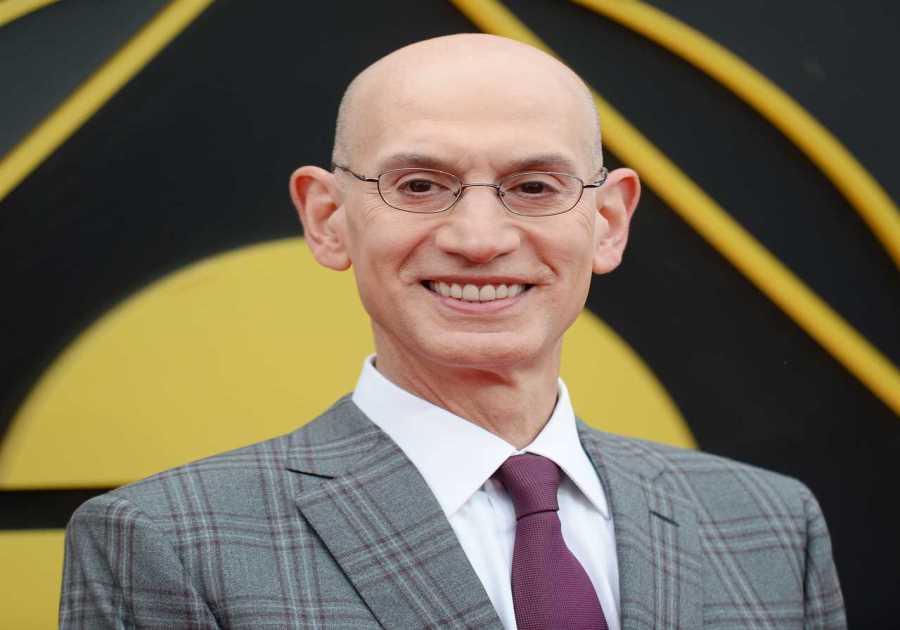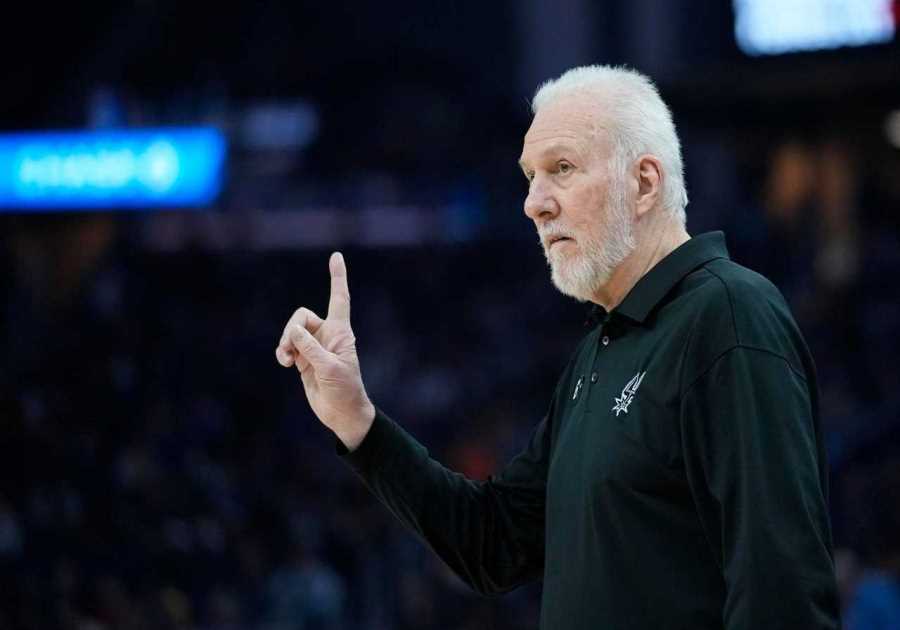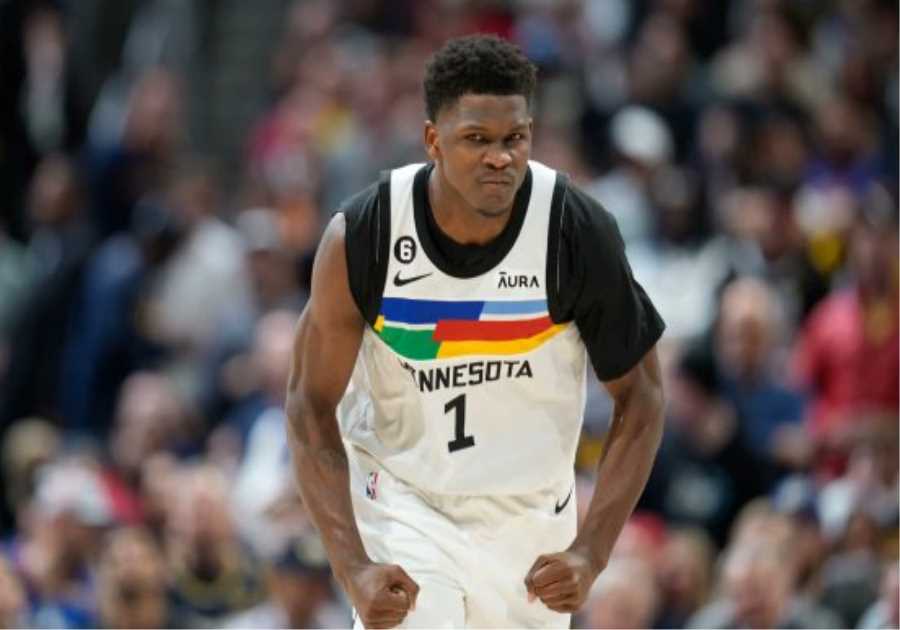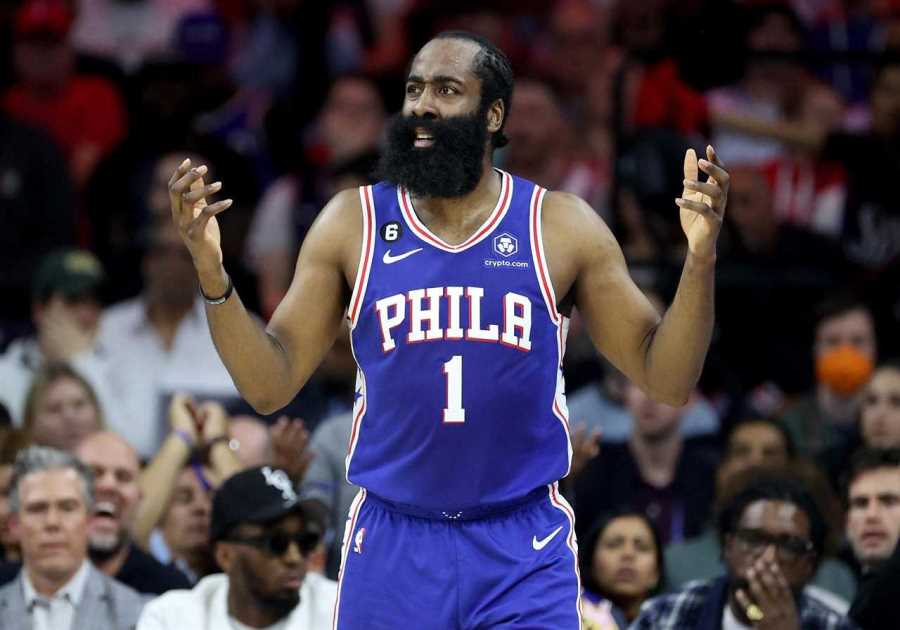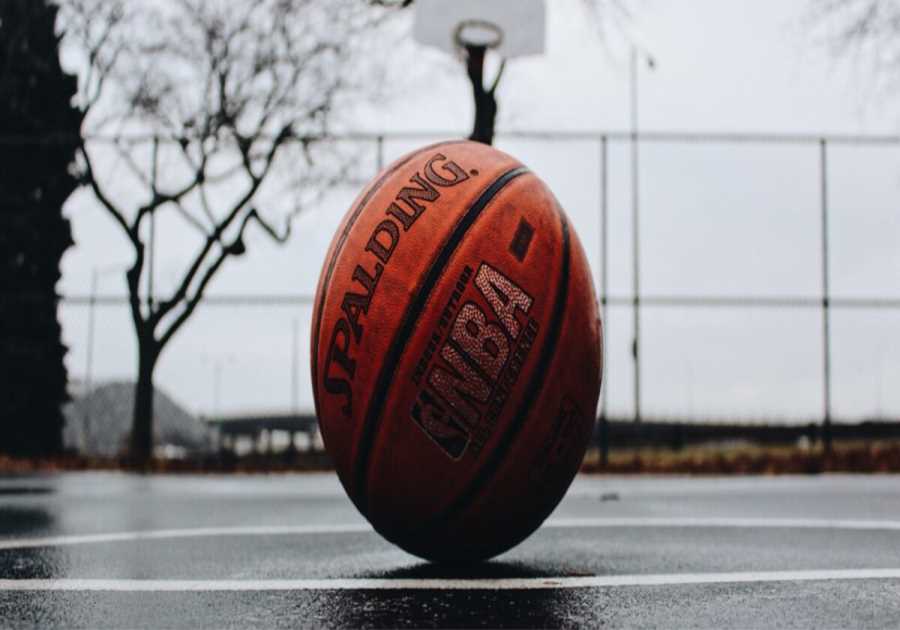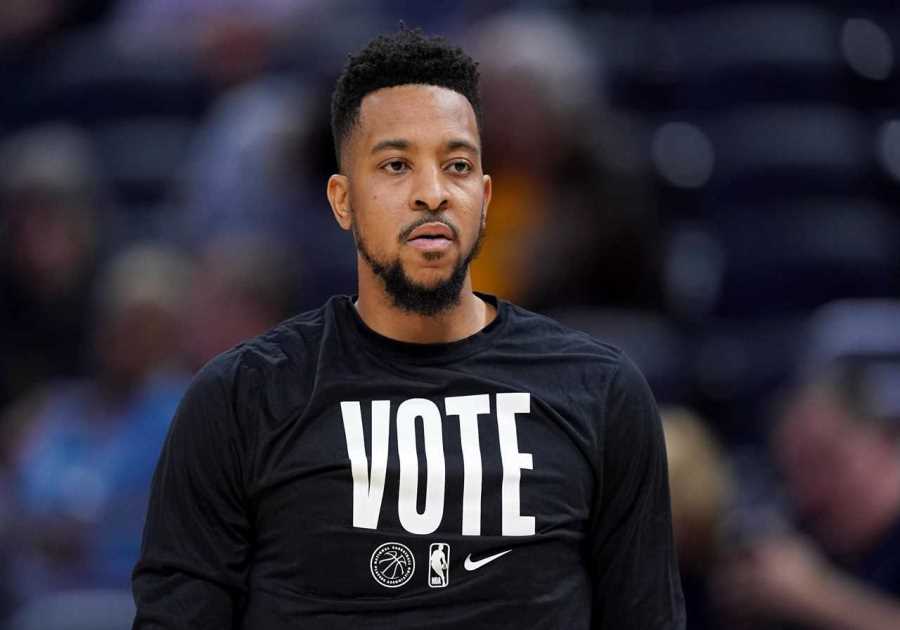
Getty Image
The New York Knicks enter Game 3 of the Eastern Conferences Semifinals with a chance to go up 2-1 in the series, which is a sentence that few would have seen coming as they slogged through the first month and a half of the regular season. They’ve gotten to this point despite a pair of a starters, Julius Randle and Quentin Grimes, dealing with injuries through the first few weeks of the playoffs, which makes the play of the team’s other crucial rotation players even more important.
Jalen Brunson has carried the torch as New York’s offensive initiator, evan as he’s dealt with his own ankle injury. Mitchell Robinson owned the glass and paint against the Cavs, an example of a player starring in his role. R.J. Barrett has been a steadying presence for the Knicks, bolstering their defense, connecting their offense, and playing with a consistent, cool confidence.
This would not have applied to the majority of Barrett’s season. While sentiment became a little too low on Barrett over the course of the year, frustration over his play was understandable. His season was marred by inefficiency, large stretches of inconsistency, an outright flatlining of his jumper, and a regression in his defense and decision-making.
The nature of this was maddening, as Barrett frequently operated on extremes. One game, things are forced, whether it be poor shot selection or a myriad of head-scratching turnovers. The next game, he’d be too tentative, with his offensive production lacking as a result. Open shots were hesitated on and the half-court offense gummed up — on/off splits are not a tell all of player impact, but it’s notable that the Knicks were outscored by -12.3 points per 100 possessions with Barrett on the court per Cleaning the Glass, by far the worst mark in New York’s 9-man rotation (Brunson, the next lowest, was at -0.2). His defensive slides were either the wrong or just not there at all. His presence, or lack thereof, was felt regardless of offensive performance.
And then, you get to the playoffs, where Barrett has seemingly figured things out.
Over his last five games — easily one of the best stretches of his career considering the moment — Barrett is averaging 23.2 points on supreme efficiency (61.6 percent true shooting). He’s 36.7 percent from deep on high volume and generating easy points with his strength, driving to the line 6.4 times per game. Playing against two of the top-10 defenses in the league during the regular season in Cleveland (first) and Miami (seventh), has made Barrett’s play even more impressive.
New York’s offense isn’t set heavy. Much of what they do is built off of the principle of drawing a double team/forcing help, and then making a defense pay for doing so. It’s simple, but with a roster built to Tom Thibodeau’s preferences, it led to the third-most efficient offense in the league in 2023, per Cleaning the Glass. Barrett can be prone to hesitation, forced shots, and struggling to make consistent reads in and around multiple bodies, which doesn’t jive with how Thibs wants to do things. But during the playoffs, a switch has flipped, and he’s looked much more comfortable doing all of this.
He’s been adept at finding his own offense within the flow as an off-ball complementary scorer, operating well attacking the gaps in Miami’s zone.
It seems small, but that step or two into his drive and eventual deceleration into the floater is found money. The lack of hesitation and planned attack is what makes the play so deadly from him.
He’s been aggressive in finding open pockets, relocating as a shooter, and letting it fly with a quickness.
As noted by Mark Jones during a broadcast, it seems notable that Barrett has changed his shooting pocket (i.e.: where he starts his shooting motion) and it’s become much more of a straight up and down rhythm rather than the cross-body approach he’d gone with prior. It’s difficult to time a jumper without watching up close and in practice, but the snappiness and comfort in his release has been apparent, especially compared to how rigid his shot has been in the past.
During game one against the Heat, Miami switched early and often to try and negate dribble penetration. In the past, Barrett’s shot selection tendencies and reads have been inconsistent against switching, but he put together one of the finest halves of his career to open the series. He was patient in seeking and destroying size mismatches in pick-and-rolls with Robinson, which the Heat largely did not switch. If there wasn’t an advantage to be had, he moved the ball and moved himself. He blew up the switch pocket when the Heat overplayed Brunson’s drive game.
While Barrett did force a few shots in the second half and overall offense died down, the process was still good. Sometimes you still miss shots! How he adapted when the defense reacted was huge — remember this for later.
The Cavs put two on the ball regularly on Brunson to try and slow down his interior attacks, and the Knicks opened up their offense with Barrett as a screener.
Jarrett Allen didn’t have his best series as a defender, but Barrett did his job to put him in a bind: leave one of the best rim finishers in the league (Robinson) wide open/guarded by a small, or close hard to the corner.
Again, that lack of hesitation is so pivotal. Efficacy, quickness, and confidence are the eternal blend that create shooting gravity. The first round series was an immaculate display of gravity in real time, as the Cavs initially were keen to let Barrett shoot, a sensible gamble headed into the matchup. Even without making many, it was enough in tandem with his quick trigger that forced Cleveland into defending him to the three-point line. Misses matter — are you putting the fear of god in the defense, making defenders adjust to constant pressure?
In Game 4 against the Cavs, Barrett missed two straight threes from the same corner, off the same play ghosting into the empty side. That’s what made the next part so fantastic to see play out.
As Barrett turns his shoulders and scans, he can see Caris LeVert short closing, approaching with chopping steps rather than a hard flyby. He feints inside with the in and out, freezes LeVert, and swiftly attacks baseline, going inside hand to beat the roaming Allen to the rim.
This single play was the culmination of a series of work and reps, bending the defense just enough with consistency, and attacking correctly even when given a minimal window.
While his reads haven’t been perfect (no one’s are), they’ve been consistently positive, and that’s been the largest driving force of his success. His driving has also been crucial. Incredibly strong for his size with a solid first step, Barrett has made strides literally and figuratively by working in a few extra gears in his transmission, he’s leveraged more control of the tools that made him a top-5 pick.
He’s been methodical in seeking out first contact out of ball screens, determining when and where he’ll do battle in the intermediate areas of the court. It seems a minor adjustment, but it’s done wonders in helping him create some cleaner looks around the rim, essential considering he’s not an overwhelming vertical athlete. Craft, patience, and those additional pivots and stutter steps are gigantic in Barrett creating better looks in the restricted area.
Watch how he uses his shoulders and stride length changes coming out of the slot.
By changing his pacing in his strides, getting a hand on Gabe Vincent early, and timing his own drive with Robinson’s roll, he’s able to get the most of his size and extend into an undeterred finish around the rim. This is leaps and bounds ahead of the line drives that would oft be smothered by defenses. There have been signs and indicators of a budding ability to change pace during Barrett’s career, but this recent stretch has been inarguably the most consistent. Even with poor finishing numbers in the first two games against Cleveland, the process was still clear and positive.
He’s noticeably making progressions, feeling out the game and the defense, and letting it come to him rather than barreling in and reading after. Rather than hitting the gas with his defender on his hip, Barrett’s head is up, sees Bam Adebayo step up, knows Robinson is rolling undeterred, and throws up the lob.
When the Cavs tried to adjust with quicker rotations in Game 5, opting to hard hedge and switch to take away Barrett’s open threes while also stifling Brunson’s drives, Barrett showcased his reads.
The second Barrett is turning, he’s met by his new defender (LeVert). This is a scenario in which we would’ve seen him freeze up or get tunnel vision more often than not. Not anymore! First he scans the slot, which is covered. Then he sees Darius Garland moving and rotating, finds Immanuel Quickley wide open, and throws a skip pass to the corner.
He’s timing his own drives with his roller to manipulate the weak side tagger and paint the corners/slot with a quick kickout.
There’s room for improvement in his deliveries, but it’s hard to not grin in watching this development from Barrett. He’s not making the sexy plays, just the right ones. Barrett has long been capable of doing the difficult, but struggled to find consistency in the routine. For him to put together a stretch of meaningful play at the highest level while consistently doing the small things means more for his future and potential than can be described in a sentence. And as a reminder, he turns 23 in June, making him the third-youngest player on the Knicks’ roster.
The playoffs can bring out the best in a player. They can also, unfortunately, bring out the worst. By feeling the game, doing the simple things that he’s struggled to execute, and becoming just what the Knicks need, Barrett is making sure that his best is on display.
Mark Schindler
https://uproxx.com/dimemag/rj-barrett-knicks-2023-playoffs-analysis-videos/
By: Mark Schindler
Title: RJ Barrett Is Giving The Knicks A Boost By Taking Care Of The Simple Things
Sourced From: uproxx.com/dimemag/rj-barrett-knicks-2023-playoffs-analysis-videos/
Published Date: 05-06-2023
Frequently Asked Questions
What is the greatest NBA Dynasty ever?
This hotly contested topic has been discussed for decades. The 1980-1989 "showtime Lakers" were the dominant team in the league, winning five championships under Kareem AbdulJabbar and Magic Johnson. During this period, superstars like James Worthy, Byron Scott and Kurt Rambis were part of the Lakers' roster.
From 200 to 2004, the Los Angeles Lakers, later called the Shaw and Kobe Lakers became a force to reckon with. From 2000 to 2002, they were defended by Shaquille Ol'Neal (both Hall of Famer) and Kobe Bryant (both Hall of Famer).
The Chicago Bulls of 1990 were also a dominant force in their time. They won six championships under Phil Jackson, the legendary head coach. Michael Jordan is widely regarded as being the greatest player of all-time. The Chico Bulls of 1995-1996 are one the most notable teams in NBA basketball history. They won the first of three consecutive NBA Championships and were the only team to win 72 games that season. The Golden State Warriors later broke the Bulls' 72-10 regular season record in 2015-2016.
The Boston Celtics of 1960s are the most well-known dynasty of NBA history, having won eight consecutive titles and 11 titles under Hall of Fame head coach Red Auerbach. Legendary players such as Sam Jones, Bob Cousysy, John Havlicek, John Cousysy and John Havlicek created a winning culture for the Celtics that has endured for decades.
The San Antonio Spurs are a contender for best NBA dynasty. From 1999 to 2007, the Spurs won 4 championships, and had one of league's greatest runs. Gregg Popovich and Tony Parker, future Hall of Famer, Manu Ginobili as head coaches, improved the team’s basketball approach. This emphasised a team-first mentality which helped them succeed.
The Golden State Warriors are one among the most successful NBA teams, having won four championships in the last ten years. Steve Kerr is their head coach and they are led by Stephen Curry, Klay Thomson, Kevin Durant and Klay Thompson. The Warriors have a unique brand of basketball that has won over fans all over the world. They are also considered to be the greatest NBA dynasty.
It is difficult to choose one team to be the greatest NBA dynasty. Each team had their own set of coaches and players that made them great, but certain teams stood out because of their dominance. The Lakers, Bulls, Celtics, Spurs and Warriors would make a strong case for the greatest NBA dynasty.
How much are players paid in NBA?
The NBA's average salary is $7.3million for the 2021-2022 NBA season. This figure is calculated using the maximum salary limit of $134million that was set for this year. However, the salaries of individual players can vary depending upon their experiences and achievements.
Superstar players like LeBron James and Kevin Durant can earn up to $40 million a year, while rookies may make as little as the minimum salary of $898,310. Other veteran players may also be eligible, depending upon their years of experience, for mid-level exemption salaries. These can range from $4.76million up to $9.258million. Players may also be eligible for bonuses and other incentives based on their performance or team success.
Who holds record for most NBA career playoff wins?
LeBron has led the charge with an impressive 174 wins over NBA Playoffs history. He also played in 266 games. It's easy to see why he is one the most sought-after players in basketball today.
Who invented basketball?
The exact origins of basketball are unknown, but it is widely believed that James Naismith created the game in 1891 while he was a teacher at the International Young Men's Christian Association (YMCA) Training School (now Springfield College) in Springfield, Massachusetts. Naismith invented the basic rules of basketball and put a peach basket on an elevated track. He then divided his class of 18 into nine teams and started to teach the basics of his new game called "Basket Ball." Original version had a soccer ball and two peach baskets attached to the gymnasium's ends. Players were limited to shooting at the basket from below, and goaltending was not yet part of the game. The game gradually spread across America, and by the early 1900s, basketball had become an organized sport with professional teams playing in large arenas. It is still one of the most beloved sports in the globe.
What team is the most successful NBA team ever?
The answer to that question is subjective. Fans will continue to debate it for years. Los Angeles Lakers, Boston Celtics have the most NBA titles with 17, while the Boston Celtics has 17. Chicago Bulls' glory years were in the 1990s under Hall of Fame coach Phil Jackson. Five championships have been won by the San Antonio Spurs since 1999. The Golden State Warriors have won four of the last ten. Other notable teams from throughout NBA history include the Philadelphia 76ers of the early 1980s, the Kobe-Shaq Lakers of the 2000s, and LeBron James's Miami Heat team that won back-to-back championships in 2012 and 2013.
What is the average time it takes to become a NBA superstar?
To become a true professional NBA star, it takes a lot of dedication and time. It takes years of hard work, physical conditioning, as well as skill development to become an NBA star. On average, players spend three to five more years in college developing their skills before they make it to the draft. Players must excel in the NBA and earn a spot on their team's starting roster. You will need to be more skilled and receive professional guidance from your coaches and trainers in order to do this. Ultimately, becoming an NBA superstar is not something that happens overnight or within a few short years. To achieve such honors, you need to be committed, dedicated, and patient. You can be a NBA legend if you have the right mindset.
How long is a player allowed to stay on waivers
A waiver is a condition in which a NBA player is released by their team at any time during the season. Waived NBA players are eligible for a waiver 48 hours before another team can claim them. If more than one team claims the player in that time frame, priority goes to the team with the worst record.
Statistics
- Williams would 'likely' accept a deal worth $14-15M/year; Celtics are 'unlikely' to offer such a deal (HoopsHype) (bleacherreport.com)
- The 2013–14 season opened with 92 international players on the opening night rosters, representing 39 countries and over 20% of the league. (en.wikipedia.org)
- The opening game of the 2020 Finals between the Los Angeles Lakers and Miami Heat brought in only 7.41 million viewers to ABC, according to The Hollywood Reporter. (en.wikipedia.org)
- Meanwhile, the opening night rosters include a record-setting 234 players with some G League experience, according to the NBA ( Twitter link ). (hoopsrumors.com)
- "NBA first-round ratings drop 27 percent, 40 percent since 2017–18". (en.wikipedia.org)
External Links
sbnation.com
si.com
nba.com
twitter.com
- Tweet / twitter
- Sam Amico on Twitter: "Timberwolves Waive PJ Dozier, CJ Elleby and AJ Lawson - Hoops Wire https://t.co/xKu1ZTuQZN" / Twitter
How To
How do you get into the NBA?
High school and college are the two main routes to becoming a NBA basketball player.
College players attend NCAA schools like Duke University, North Carolina State University, or the University of Kentucky. These schools offer training and education for four years. This period teaches players how to handle the ball, shoot, and rebound. They also learn how to manage an offense and defend. They also learn how to be a professional athlete mentally.
Prep schools in other states are available for high school students. These schools offer personalized attention and focus on talent development. They teach players academics, character building, and sportsmanship.
Both types players must pass the identical physical tests to be eligible for the draft. The test includes running 40 yards, jumping above a 5'6" box and standing on one leg while throwing a football through the tire.
After passing these tests, players can be invited to workout with different NBA teams. The teams evaluate players based upon their height, weight and wingspan.
Teams also consider their past experiences. AAU basketball player will most likely get preferential treatment.
Players considered too small to play professionally are sometimes called "one-and-done" prospects. These players are typically selected in the second round.
Some players opt to skip college and join the NBA straight away. These players are called "prospects." Prospects don't have to wait to declare themselves eligible to draft.
They may apply for an exemption in order to be permitted to join the draft earlier. Prospects can apply for an exemption to be allowed to enter the draft early.
Participation in summer leagues is a way to improve your chances of getting selected. Summer league games are played in July or August.
These events allow scouts to see players in action without worrying about injury risks.
June is the NBA Draft. This is when all top prospects are evaluated by the 30 NBA teams. Each team receives a set number of picks in each round.
In other words, the first selection in the first round is usually the 15th overall. The 60th pick is the 20th selection in the third round.
After the draft, teams make trades to fill out their rosters. Many teams hold mini-camps where draftees can train with them.
Draft day is exciting! What happens?
The draft is over once it begins. There's no waiting for your name being called. Every NBA team takes turns selecting players from the pool of available hopefuls.
When a team has selected a player, it sends him his contract, which details his salary and playing time as well as benefits. He is a member the organization.
A jersey with his name on it and a uniform featuring his new nickname are also included.
Finally, he signs his contract. That is when he officially joins NBA.

